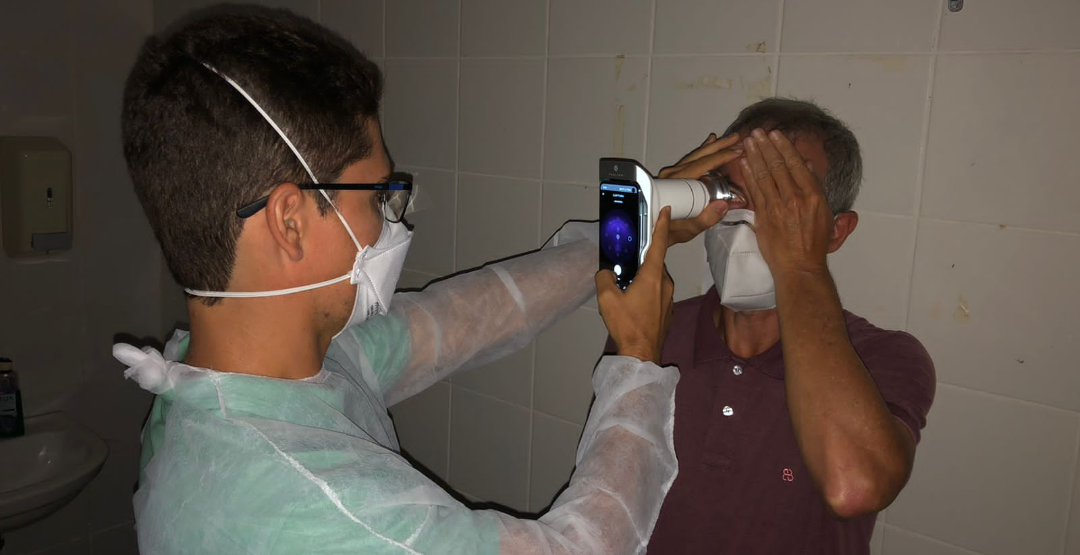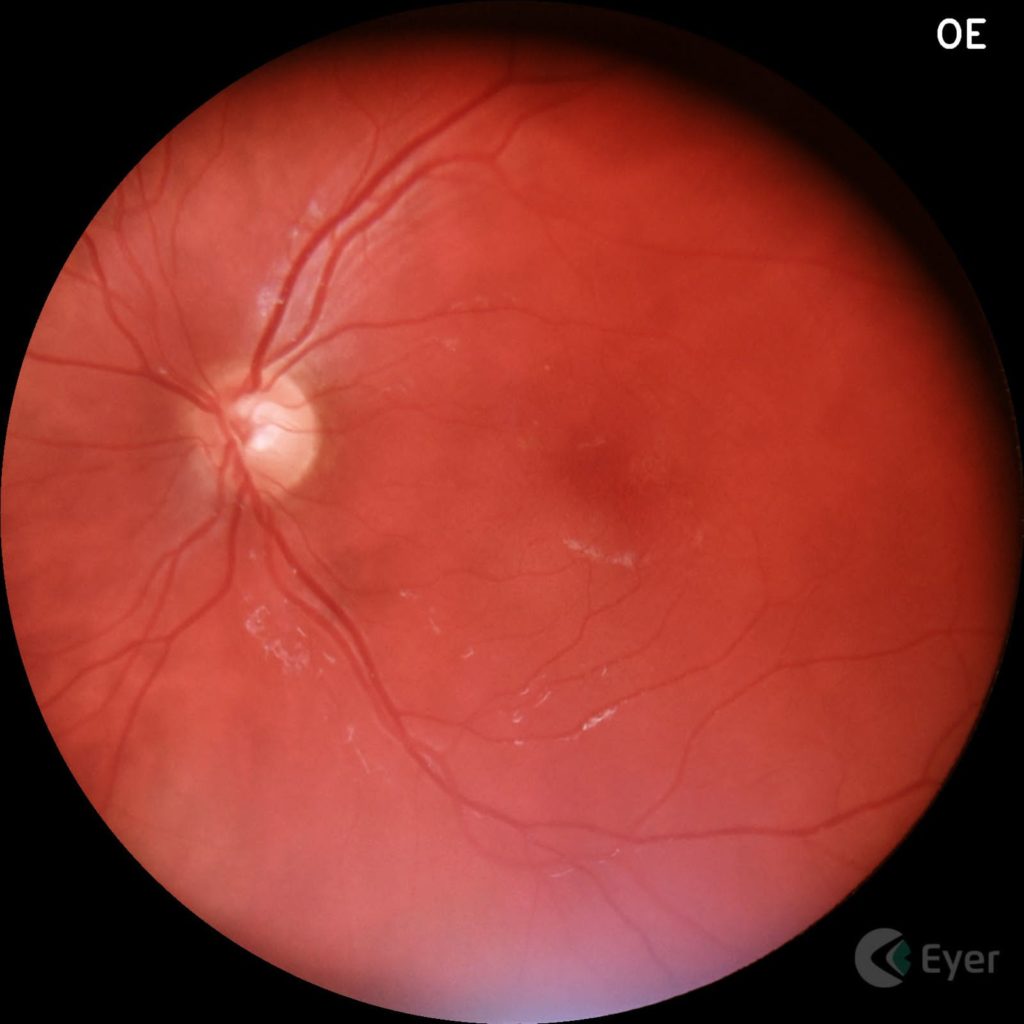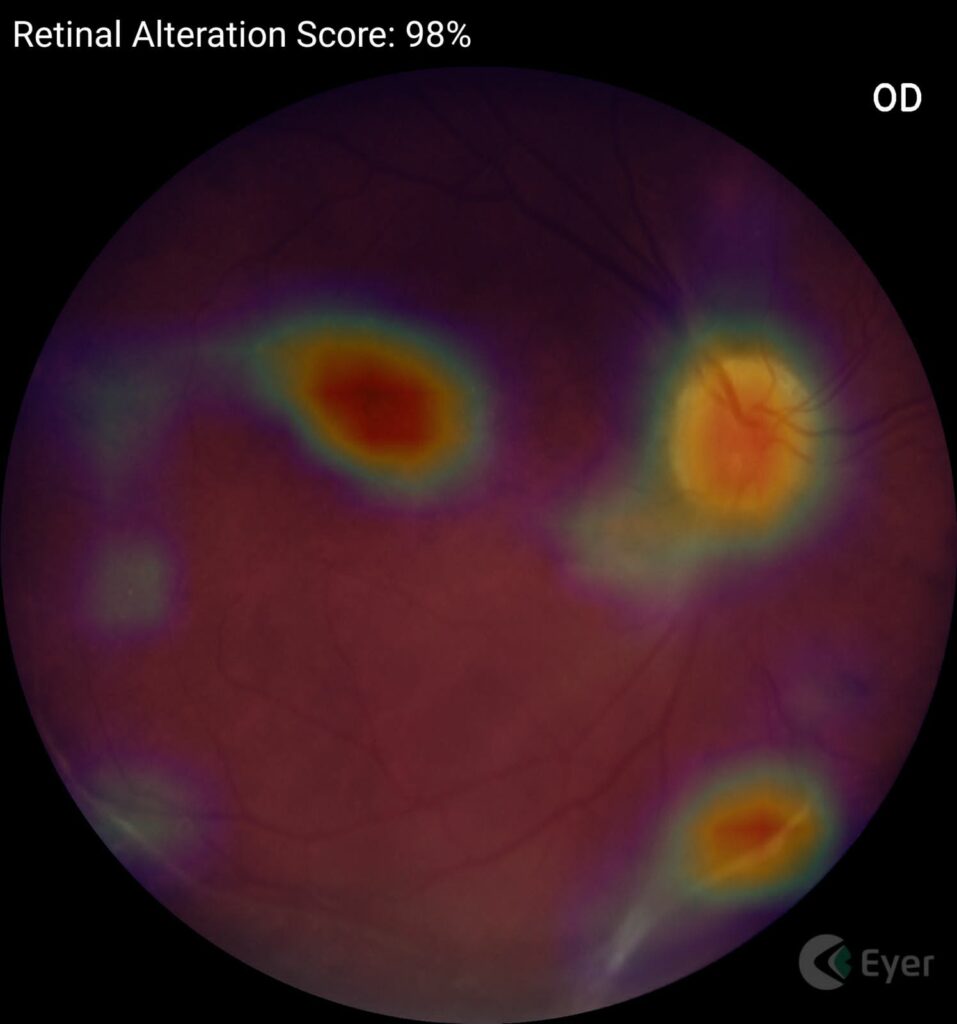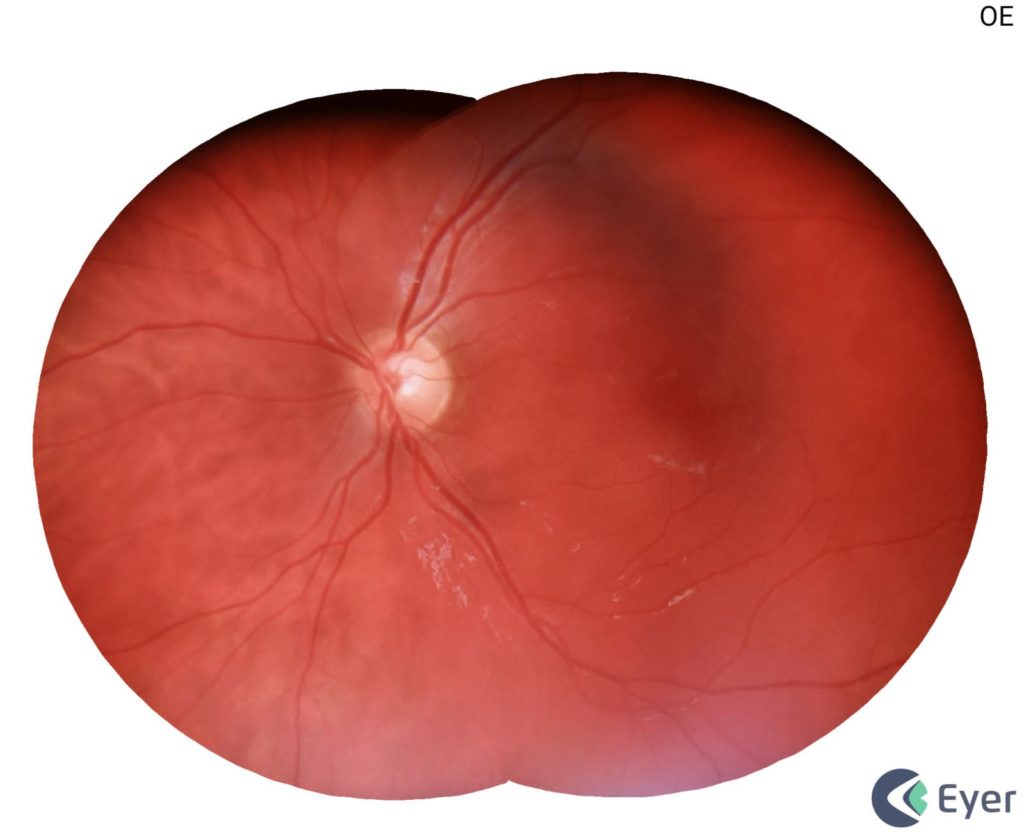In early 2019, a colleague introduced the Phelcom Eyer smartdevice to ophthalmologist and retina specialist Gustavo Melo. Coupled to a smartphone, the device carries out high-quality fundus exams, in few minutes and without need of pupil dilation. It connects to an online platform, the Eyer Cloud, which allows remote diagnosis and assures safety to data stored in the cloud.
“I invested in this technology because I believed it would be a device that could revolutionize screening and diagnosis of diabetic retinopathy in the population not usually monitored with due regularity in eye offices,” he says.
Currently, Melo has performed more than two thousand exams with his two devices. One of them is used in an endocrinological clinic for screening patients with diabetes. “Those who have any changes are referred for detailed ophthalmic evaluation. Those with normal rates are reviewed annually, ” he explains.
Gustavo Melo, Ophthalmologist
The second Eyer is used to screen diabetic retinopathy in public health units in Aracaju (SE) and cities in the countryside, in voluntary actions through partnership with public managers. “The purpose is to be a continuous way to carry out early detection and awareness campaigns about the disease,” he says.
More than that, Melo reveals that he, in partnership with the ophthalmologist Fernando Malerbi, is developing a project to screen and treat diabetic retinopathy in the population of 13 inhabitants from Sergipe hinterland. The action will be a partnership of the American NGO Retina Global and Phelcom Technologies, startup responsible for Eyer.
“I think Eyer is a revolutionary milestone in primary care because it could change the way health managers prevent blindness due to diabetic retinopathy,” he says. For the ophthalmologist, using the equipment also in the Brazilian Unified Health System should reduce the evaluation cost per patient.
Phelcom Eyer
Image made by ophthalmologist Gustavo Melo with Eyer.
About the advantages of the technology, Melo reports that the easy handling, the high-quality images and the excellent cost-effectiveness. Regarding the EyerCloud online platform, the doctor points out the very user-friendly interface and extremely fast processing. “Perhaps this tool is one of Eyer’s best features,” he says.
Phelcom Eyer is integrated with Eyer Cloud and enables storing and managing patient exams. All data the equipment captures are automatically synchronized to the system, allowing a totally safe upload to the cloud.
Among the main functionalities are the possibility of sharing patient information with more than one clinic and visualize them in the same platform; locate patients by name or exam date; and create report templates from pre-made models available in the system.
In case of no internet access during the exam, images remain stored in the device and are sent to the cloud as soon as a connection is available.
The tool may be accessed in the device itself or via cellphone, tablet or computer.
Image made by ophthalmologist Gustavo Melo with Eyer.
About Phelcom’s slit lamp support, which allows attaching Eyer, the ophthalmologist says it greatly eases examinations performance by keeping the device static. And, with the new coronavirus pandemics, it also avoids contact of the operator’s hand with the patient’s skin.
“Eyer is a real game changer in the way diabetic retinopathy is detected and treated, as well as other retinal diseases,” Melo concludes.
Phelcom Technologies
Eyer is the first equipment of Phelcom Technologies, startup that unites technology and health, headquartered in São Carlos (SP). It manufactures wearable handheld devices with internet connection, aiming to democratize access to healthcare, offering better services, with a compact equipment, to more people.
Image made by ophthalmologist Gustavo Melo with Eyer.

 Português
Português  Español
Español  English
English 






